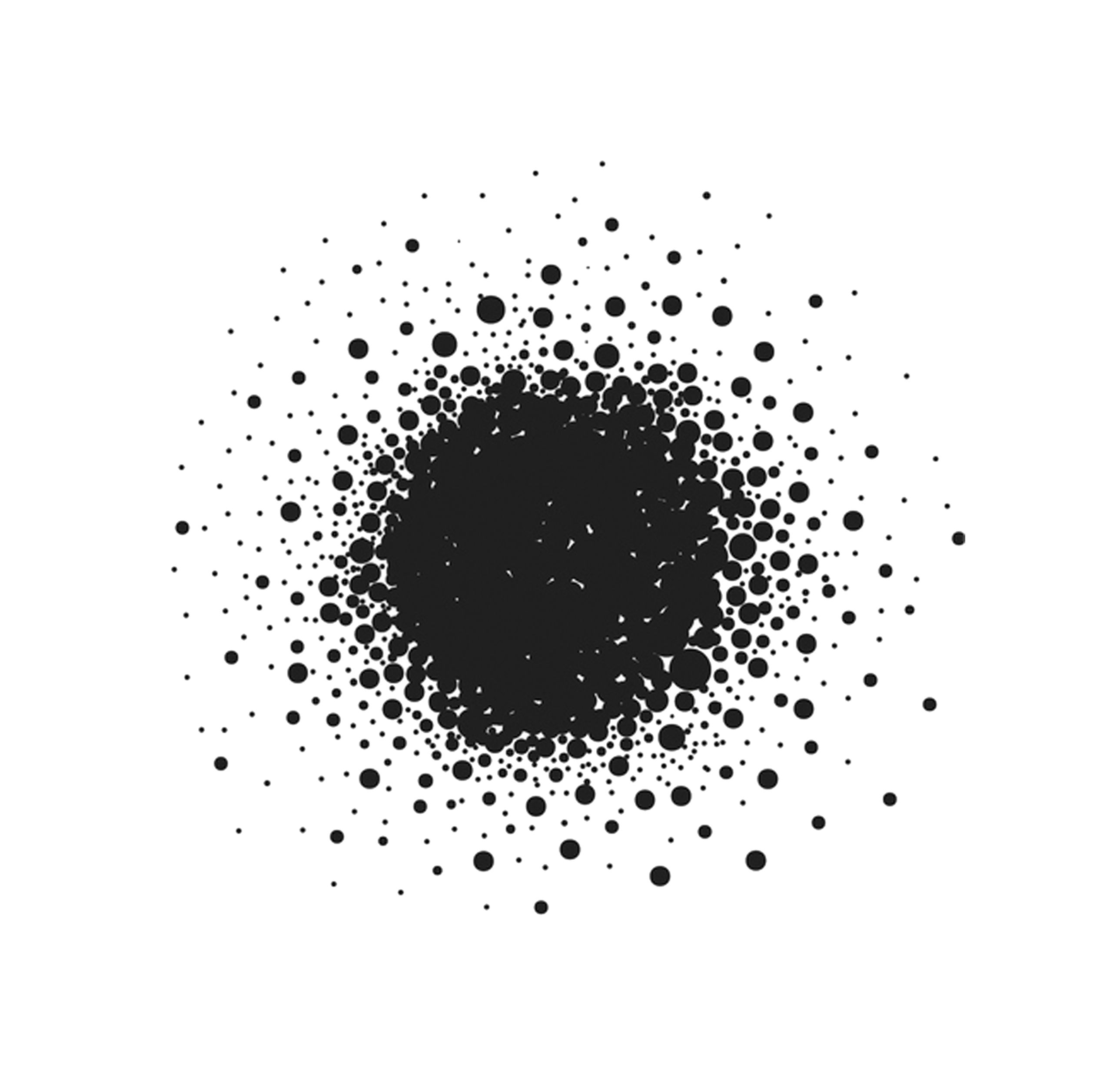Artscience, my favorite kind of science. An interdisciplinary field within the arts that explores the intersection of artistic and scientific practices. It involves the integration of artistic and scientific methodologies to create work that engages on both levels. Below you can find some of my favorites.
more to follow shortly…
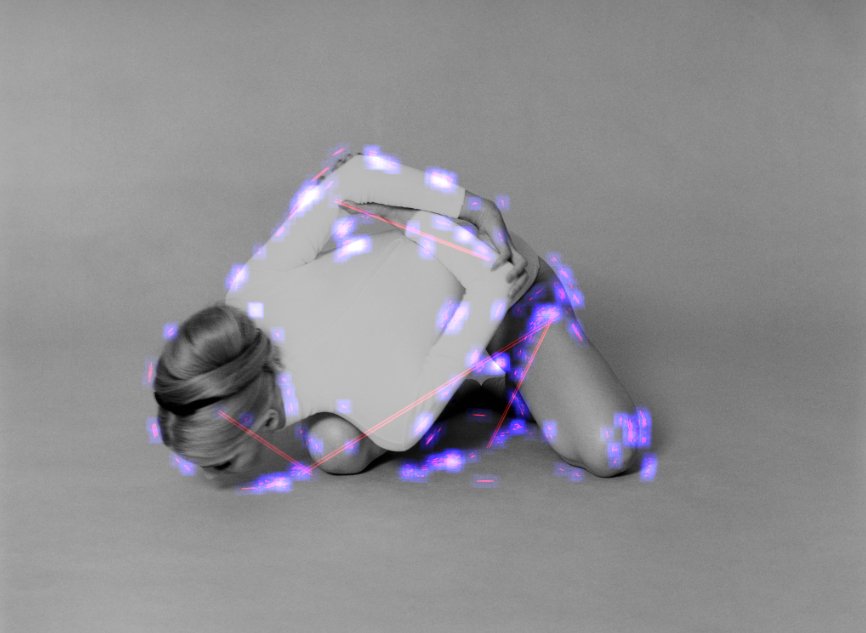
T.R.U.S.T., 2021-22.
Vintage press images with highlighted cloning actions detected by photoforensic software used to decode digitally falsified pictures.
>>> more
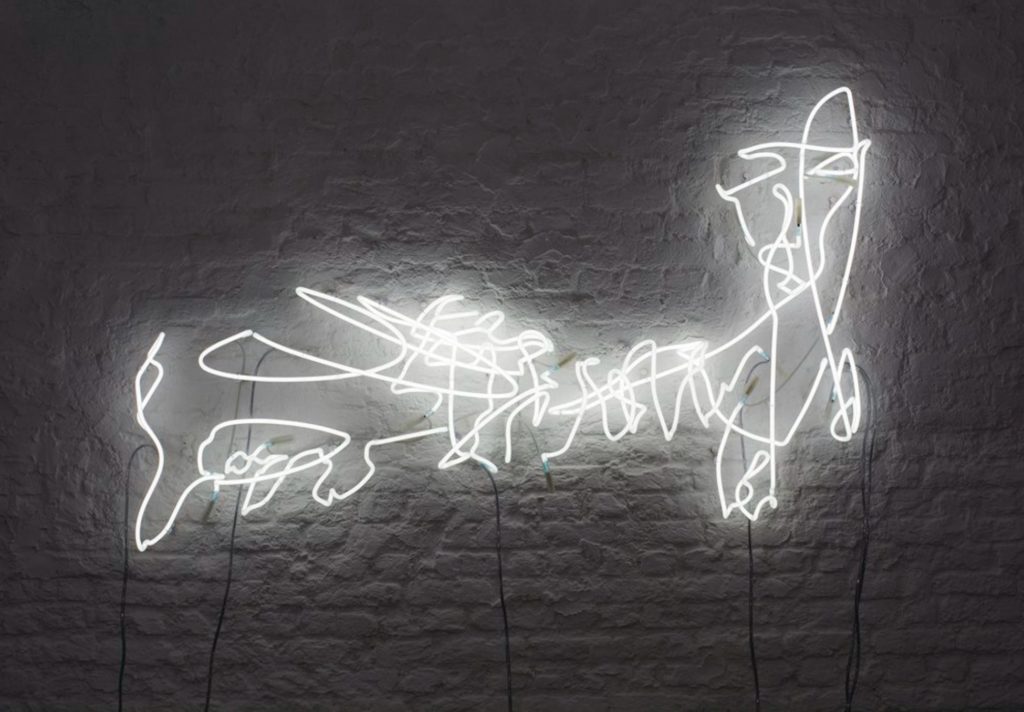
Pornographic Neon, 2014.
Pornographic Neon is a wall-piece showing the tracked eye movements of a test person while he was watching a porn movie.
>>> more
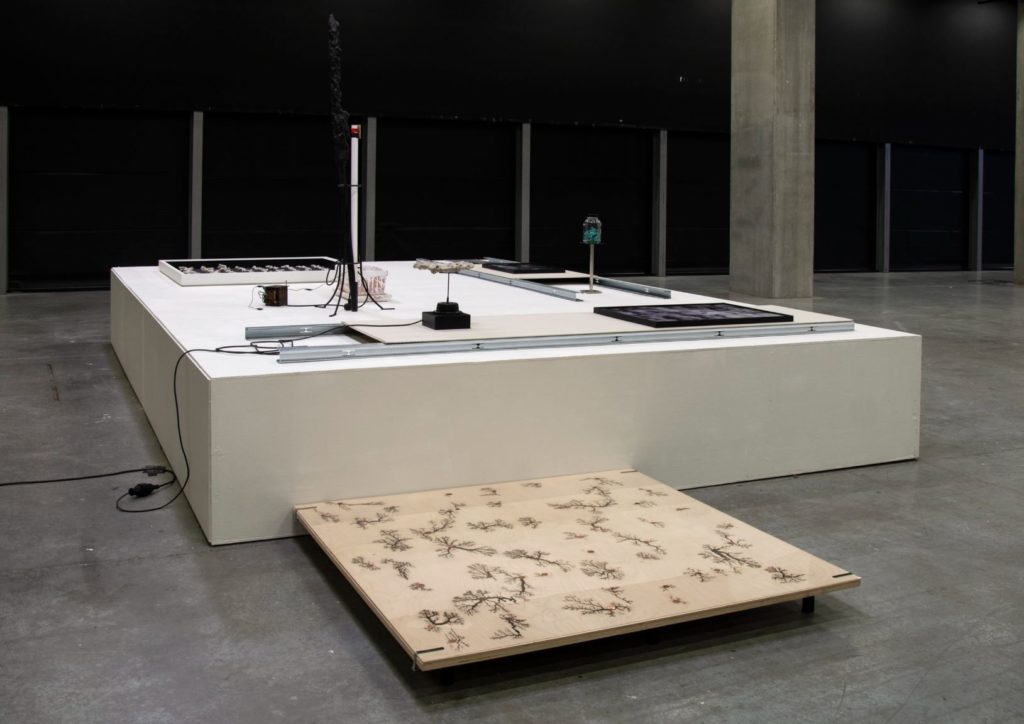
Pocket Money II, 2019.
Tased copper coins and Lichtenberg figures on wood, one of four wooden platforms, plexiglass cover with cut-out circles.
>>> more
LIVING SCULPTURES
A series of living sculptures extracting the energy produced by the dead animal and translating it into visuals and audio.
‘Matter is constantly moving, both in ‘living’ and in ‘dead’ creatures. All substances constantly undergo chemical reactions, causing them to change continually, which makes it impossible to discern between life and death. There simply is no difference between life and death. All creatures are primarily concerned with survival. Science develops techniques that are more and more able to observe details of organisms in the human body, for instance electron microscopes that a magnify a million times, endoscopes for diagnostic surgery, scanning devises using magnetic fields (MRI).… >>> read on
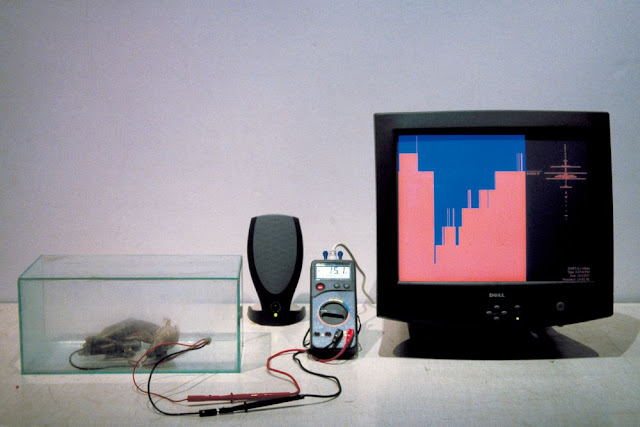
“It is important, especially now, that artist have some scientific literacy, because we are in a maze of misinformation. That doesn’t mean we have to abandon emotional literacy, but art is like quantum physics, it tries to describe the whole world, and you can’t describe something that you choose to remain clueless about.“
Joe Davis is considered one of the pioneers of BioArt, an art movement that focuses on the connection with scientific findings from biotechnology and genetic engineering. Joe Davis attracted attention as early as the 1980s with his artwork “Microvenus”.
He used a resistant microorganism that can survive in space to permanently store information about us humans and thus send it to the most distant places and possible other intelligences in the universe.
>>> watch his keynote ‘in search of paradoxes’ at Ars Electronica here<<<
Mud Well | Under our feet lies a world full of micro-organisms, most of which perform important tasks in our environment. The Geobacter is a bacteria that can purify water while continuously excreting electrons to its surrounding. Teresa van Dongen has been exploring these specific organisms since 2016 together with the Ghent University as a means to generate electricity for human use.
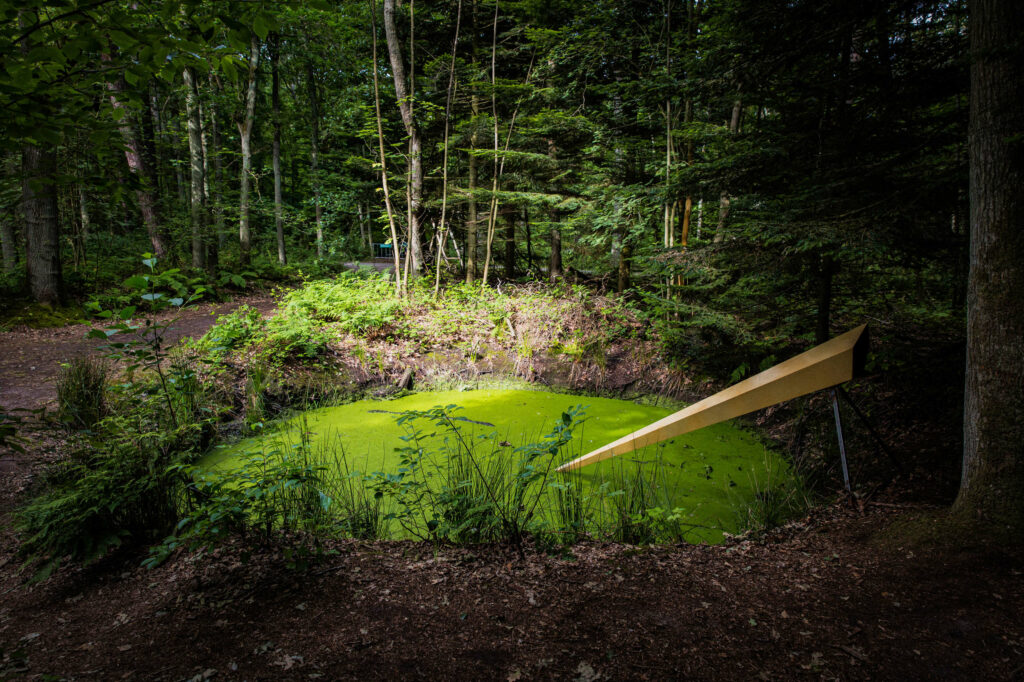
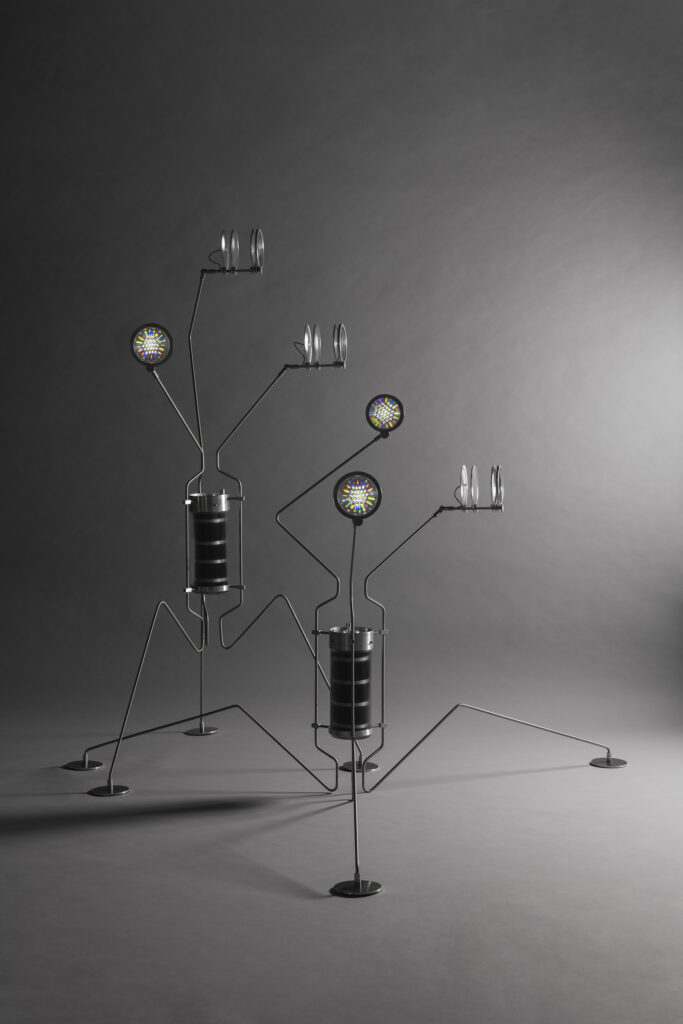
Electric Life | The light installation is entirely powered by micro-organisms that have electrons as a waste product. A future owner of this living light installation will have to feed and nurture it; a bit of tapwater with some additional nutrients and a teaspoon of vinegar a week will do. >>> read more
One Luminous Dot | As a continuation of living lamp “Ambio” this installation emphasizes on the experience of the spectator.
As a tribute to our one and only planet, the installation refers to our galaxy in which the Earth is but one little dot. The depths of our oceans still hold many mysteries to us. Countless deep sea organisms are yet to be identified, many of which appear to have the extraordinary ability to emit light. This was the inspiration to celebrate nature with a bioluminescent light installation: a star of glass tubes holds a fluid with a special bacteria obtained from the skin of an octopus. Movement keeps the bacteria oxygenated, causing blue waves to light up. >>> read more
DASHA PLESEN | Russia
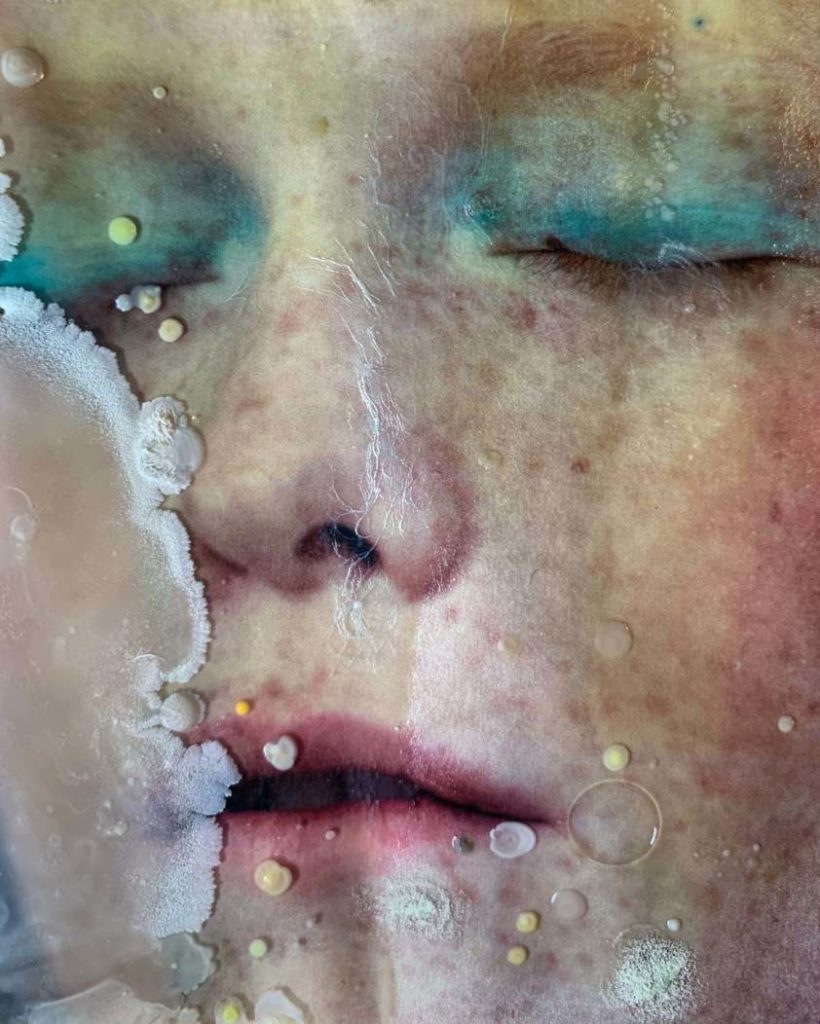
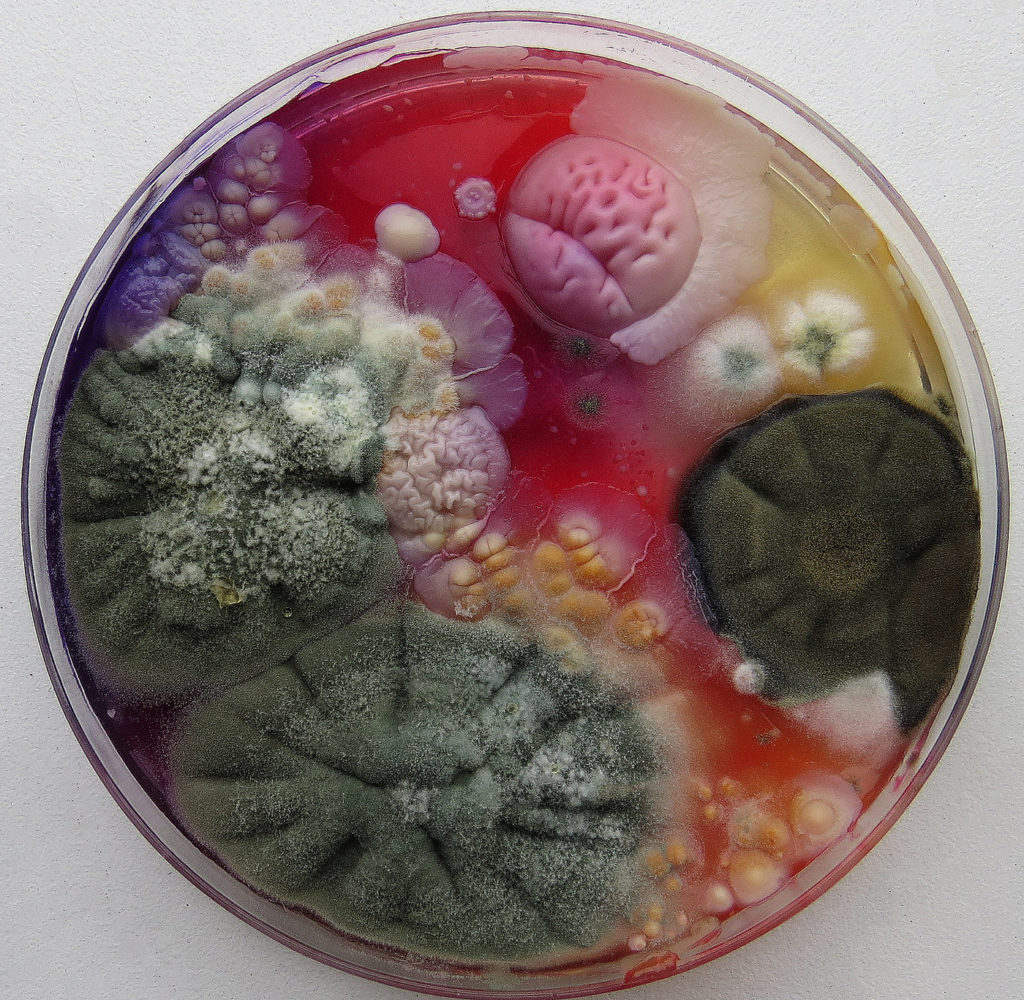
Moscow-based artist and mold enthusiast Daria Fedorova intervenes in natural decomposition processes, accentuating textures and colors and pushing the boundaries of science and art. The artist, who works as Dasha Plesen, laces petri dishes with various bacterias and other organisms before placing extra elements like fluffy balls, sugars, and sprinkles in the container.
Daria Fedorova
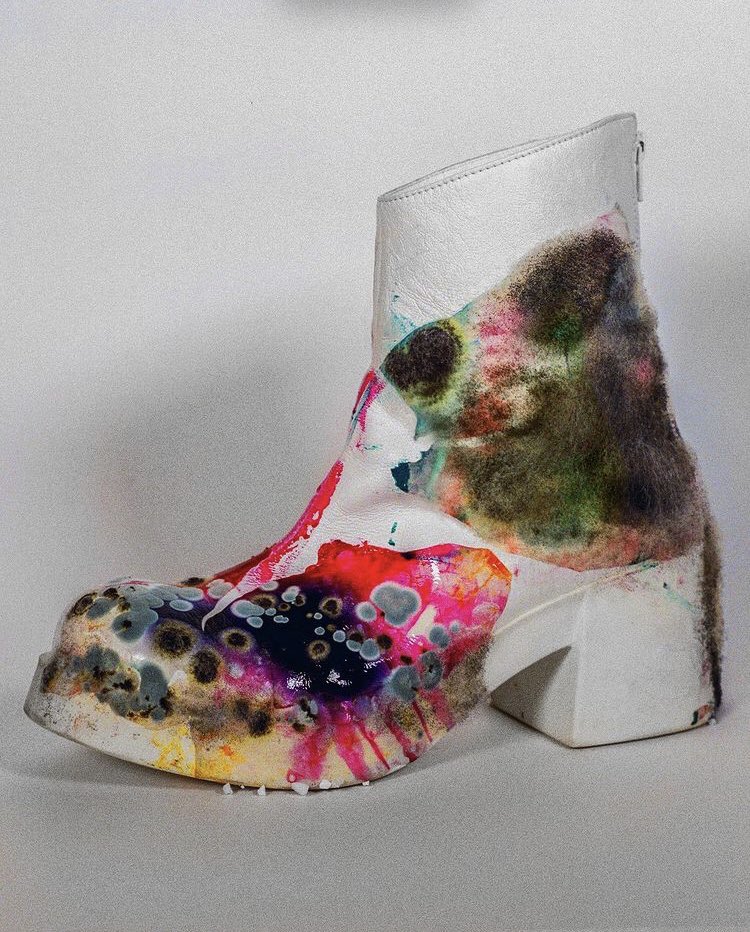
>>> more mold images here
Specially produced for Triennale Milano 2022
‘In 2016, I spent one month in residency at CERN, during which I was researching the unique properties and imaginary qualities of superconductors – an essential material for particle accelerators, being the Large Hadron Collider, the largest superconducting system in the world. Particularly, I was engaged in quantum magnetic levitation – a phenomenon that occurs when a superconductor at its critical temperature levitates over a magnetic source, known as the Meissner effect.
I was keen to imagine what impact levitation would have on art, design and architecture if this event were possible at room temperature. ‘What if bricks and clothes, for example, were made of this levitating stuff? Driven by such questions, I started experimenting with knitting superconductor fibres immersed underwater – non-coated superconductors can ignite under oxygen exposure – and looking into cryogenics to make them levitate.
As the project developed, Tim Ingold’s writings on the anthropology of lines opened me up to a new perspective on the project. ‘Physicists, in their explorations of the chain reactions of subatomic particles, aim to discover nothing less than the most fundamental building blocks of the universe itself. However, a world assembled from perfectly fitting, externally bounded blocks could harbour no life. Nothing could move or grow’
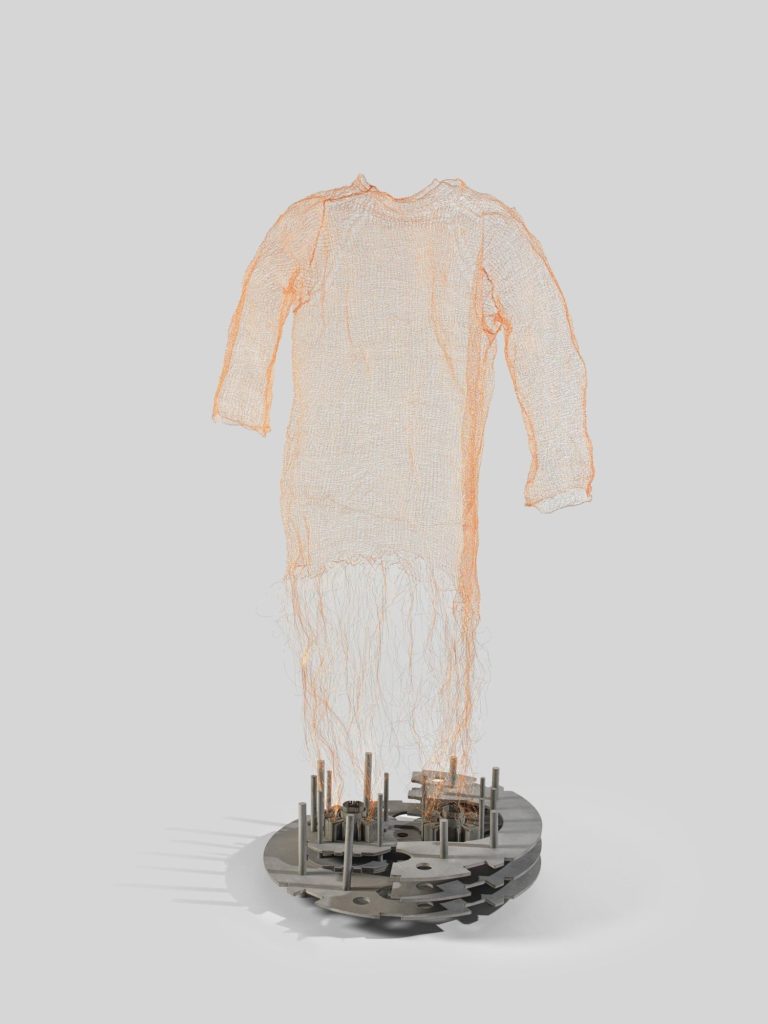
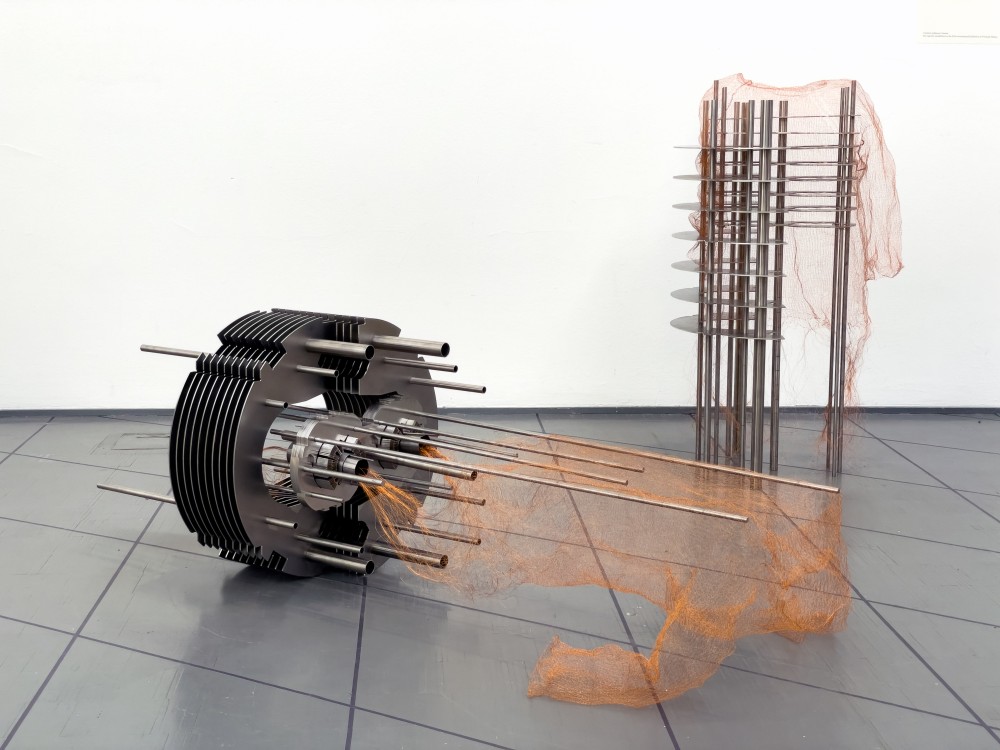
I started wondering how such a poetic abuse of technology could affect scientific language and metaphors, and materialised this insight into a CERN-like heritage object as the ones on view in the Laboratory’s collection. I created a full-scale stainless steel replica of a section from the Large Hadron Collider and developed a way to weave these superconducting fibres into textiles. These cables dangle and entangle as a sweater-like knitwork as if levitating in response to a magnetic field. What such a staged thought experiment does to the metaphor of the building blocks of the universe?
>>> more
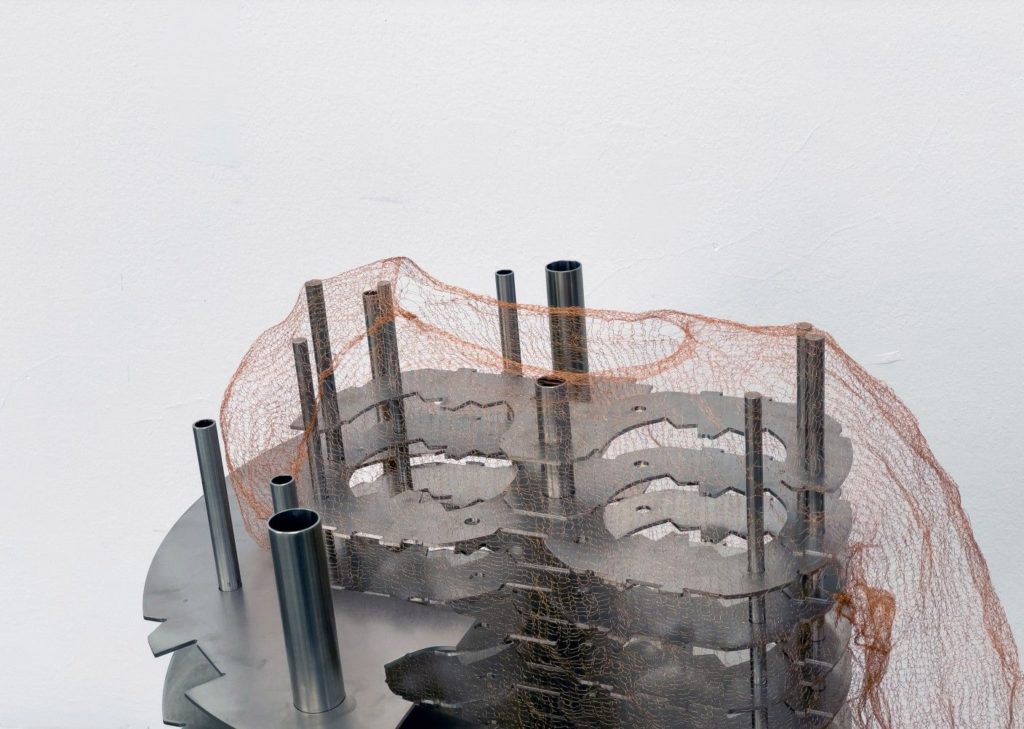
JACCO BORGGREVE | Netherlands
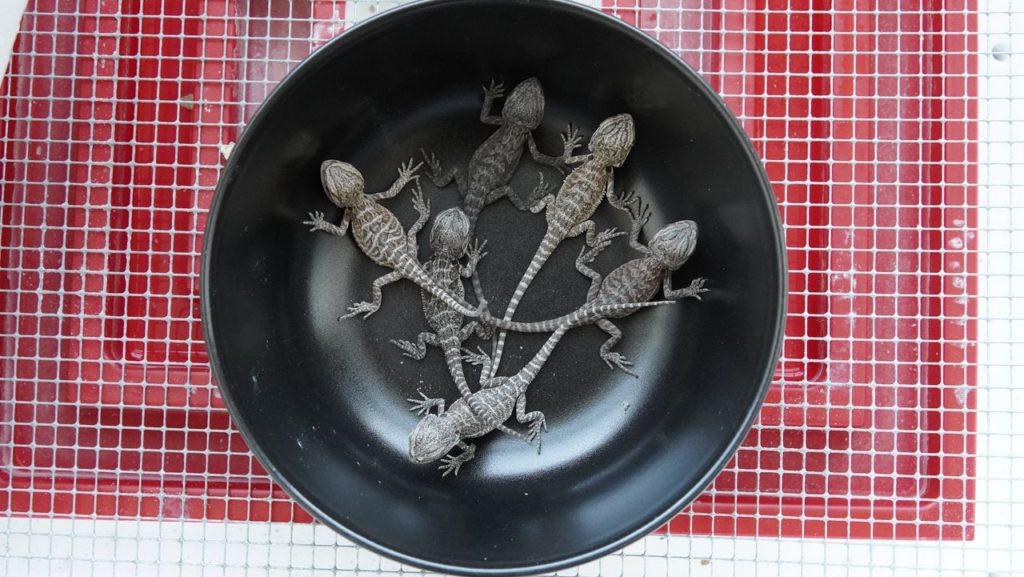
In the long durational performance, Borggreve spent two months nurturing developing lizard embryo’s. Using Peltier modules, the artist generated electricity using his body heat to provide the necessary electricity to provide power to the incubator housing the reptile eggs. He also sourced and processed nutrients and moisture from his body which further aided the development of the embryo.
Ever it Takes performs and values interspecies caring in public and private. The installation consists of a lab setting that establishes the connection between the artist body and an incubator holding lizard eggs. The mechanisms in the lab allow the artist’s biological matter to contribute as nutrients, as molecules that have passed through his body for the development of the lizard embryo.
>>> more
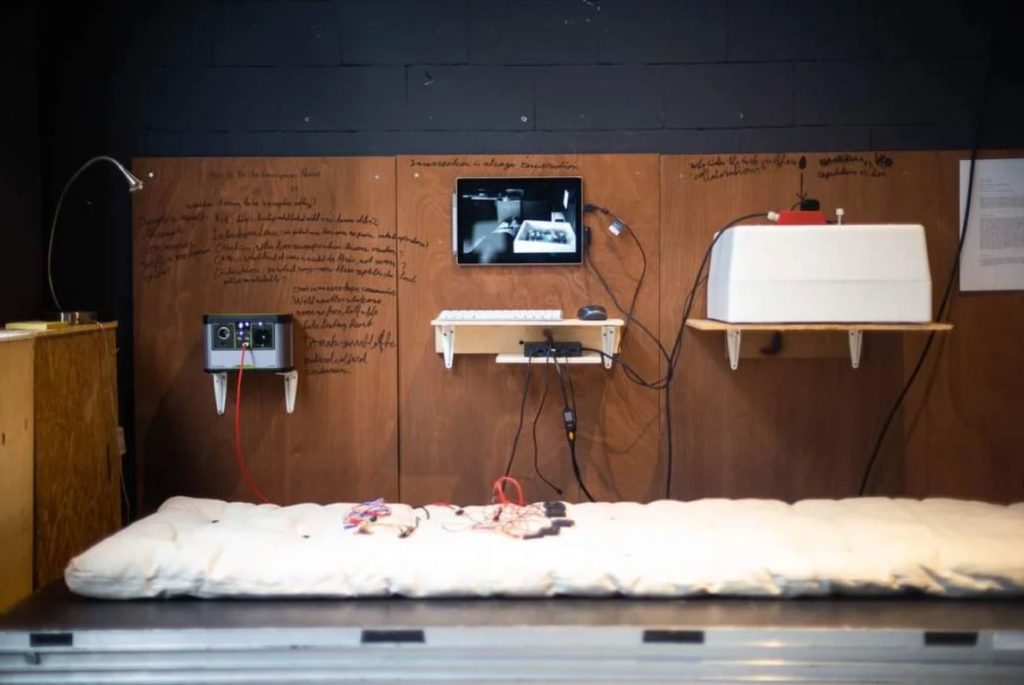
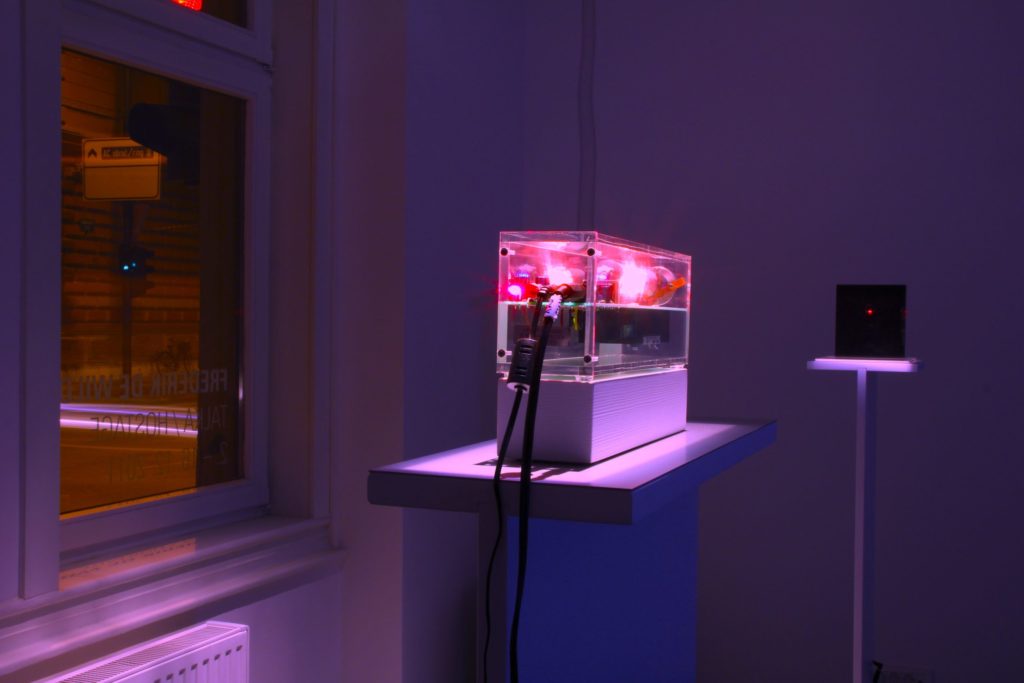
SpeakingIn2TheVoid
SpeakingIn2TheVoid is an artscience project exploring the void and communication (or the absence of it). A voice modulated laser is shooting light at the blackest-black material in the world. Is your voice disappearing into the void or is there a crack in everything?
>>> more
This project was shown at AKSIOMA
Institute for Contempory Art Ljubljana in 2011
Swarm behaviour, or swarming, is a collective behaviour exhibited by animals of similar size, which aggregate together, perhaps milling about the same spot or perhaps moving en masse or migrating in some direction. UMwelt-VIRUtopia is a micro robotic swarm that builds up a dialogue with space, sound, light and the audience. The project is a playful critique on post-modernism and technocracy, similar to Jacques Tati’s ‘Playtime’ a critique was on Modernism. The project questions swarming behaviour, patterns and emergence found in nature, culture and technologies like robotics.
>>> read on
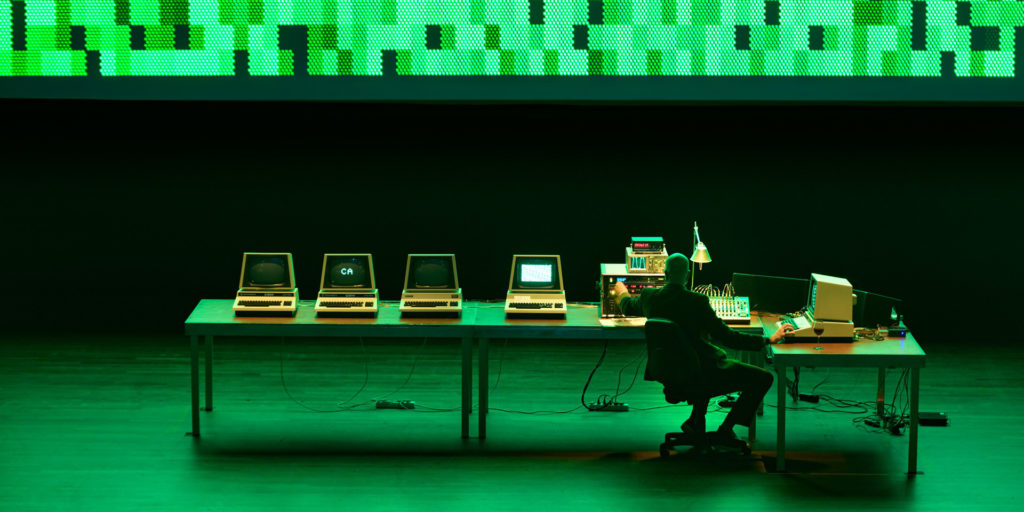
CBM 8032 AV
The CBM 8032 AV project is an exploration of the beauty of simple graphics and sound, using computers from the early 1980’s. This work is about the ambivalence between a contemporary aesthetic and the usage of obsolete and limited technology from 40 years ago. Everything presented within the project could have been done already in the 1980, but it needed the cultural backdrop of today to come up with the artistic ideas driving it.
.
When artists began to explore computers as medium in the 1950’s, technology was limited and the resulting minimalism in expression was a necessity. Half a century later, teams of thousands of programmers work on high-end games and movies, utilising clusters of the fastest computers available. The sight of a green cathode ray tube display once was the promise of an exciting future, now it is nostalgic.
On stage there are five carefully restored Commodore CBM 8032 computers, running custom software developed by the artist and his team. Three computers create sound, one machine is responsible for the graphics and one is controlling the others, with their displays turned towards the audience.
>>> read on
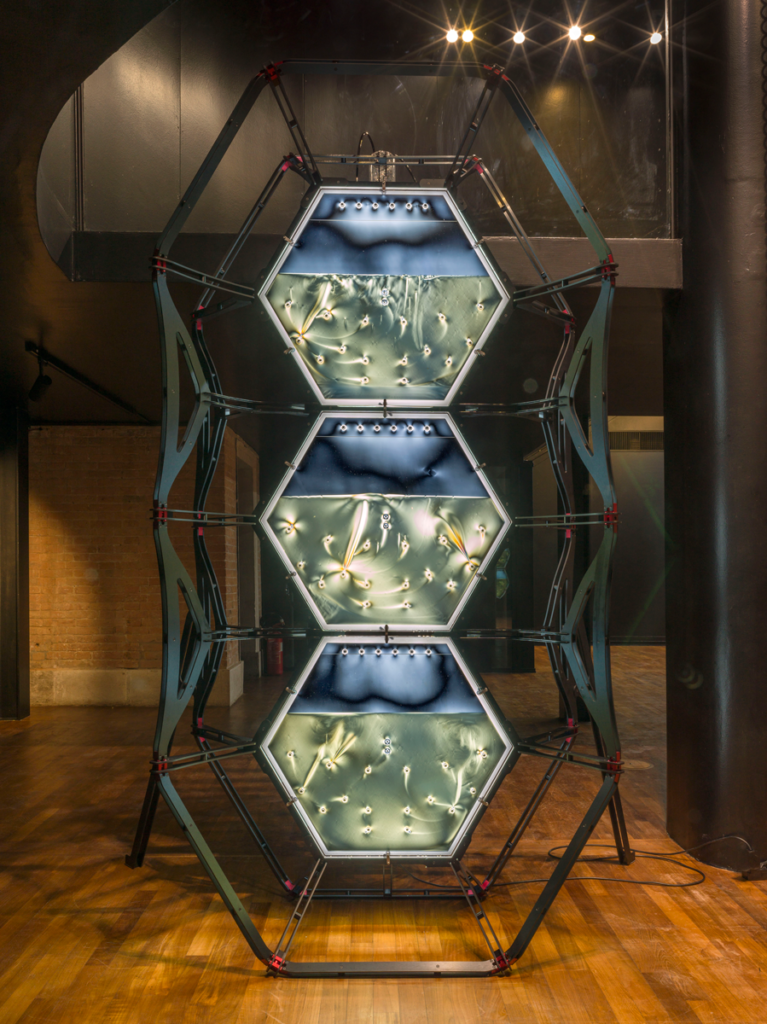
DUST OF SUNS
The installations invite the visitors to question the relationship between us and technology, living and non-living matter. Impulse (2018) is connected to the outer world by an intricate system of tubes that, similarly to blood veins, funnel seawater from the laguna into the sculpture. People who suffer from meteoropathy might instead relate to La Poussière de Soleils, as this installation can change the colour of the liquid in its three hexagonal screens according to the weather, hardening with cold temperatures and flowing more easily in warm conditions.
>>> more
BULLETPROOF SKIN
Essaïdi explores the social, political, ethical and cultural issues surrounding safety in a world with access to new biotechnologies – by reinforcing in vitro human skin with spider silk from genetically modified organisms in order to stop a speeding bullet.
Spider silk thread is relatively much stronger than steel and can even be made by a living being. Woven it would be capable to resist the impact of a bullet, much like a bee on the spider’s web. If human skin would be able to produce this thread, would we be protected from bullets? Together with the Forensic Genomics Consortium Netherlands Jalila Essaïdi takes the acid test: by implanting transgenic spider silk in the human skin and letting a bullet do its work.
With this work Essaïdi wants to show that safety in its broadest sense is a relative concept, and hence the term bulletproof. The work did stop some bullets but not those at full speed. With a “bulletproof skin” pierced by bullets the experiment leads to the conversation about how which forms of safety would benefit society.
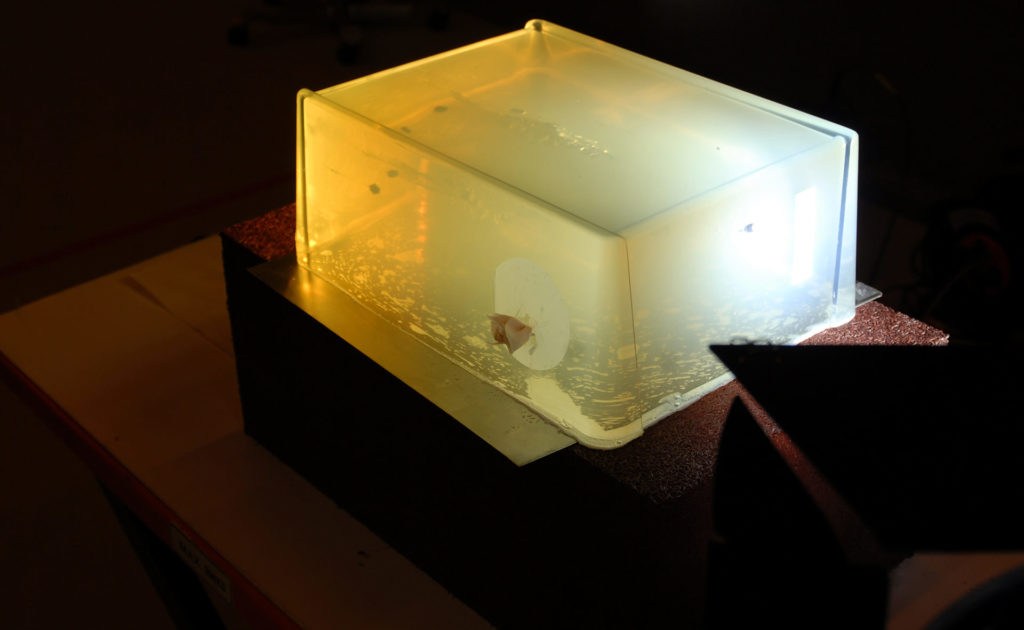
Above you can see a bullet wrapped in a piece of in vitro skin attached to a block ballistic gell from her project ‘Bulletproof Skin’.
